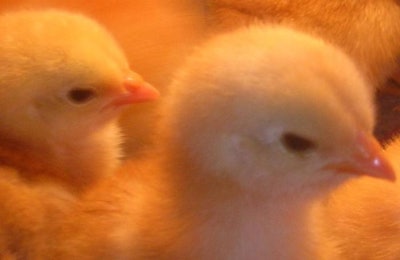
Already facing challenging economic conditions, the latest crisis for the poultry sector in Pakistan is a proposed hike in the customs duty on imported breeding stock, according to the Pakistan Poultry Association (PPA).
The price of a day-old chick has slumped to PKR2-4 rupees (2-4 U.S. cents), according to The News, while the cost of production has been estimated to exceed PKR35. This imbalance has been going on for more than 18 months, poultry breeders say.
Parent stock (PS) and broiler farmers have been selling birds prematurely for meat as a means to ameliorate their losses, and breeders have cancelled orders for replacement stock.
The budget for 2016-17 proposes an increase in the import duty on grandparent stock to 21 percent. This would amount to PKR690 on a day-old female chick destined for the breeding flock. Other levies and taxes applied, such as landing charges, add a further PKR270 per female grandparent (GP) chick, the industry says.
PPA is calling on the government to withdraw the all import taxes, including regulatory duty, on GP stock. There are no domestic GP producers so all stocks have to be imported by the four or five companies involved in this sub-sector, it says. If the charges were to be maintained, the additional costs would have to be passed on to consumers.
Import duties on PS and GP stock should be maintained at 3 percent, says the PPA.
Tariff structure impacts Pakistan’s soy trade
In Pakistan, domestic oilseed production is minimal, and changes made to import charges in recent years have significantly impacted the trade in soy, a key feed ingredient for the poultry sector.
Over the last two years, an increase in the import tariff on soybean meal from zero to 21 percent has led to a dramatic switch, reducing imports of soybean meal in favor of soybeans, according to the USDA Foreign Agricultural Service (FAS). The aim of the change was to shift value addition to the domestic industry.
Pakistan imported around 331,000 metric tons of soybeans in marketing year (MY) 2014-15. In the first 8 months of MY2015-16, the figure had risen to a record 762,000 metric tons, and a further 300,000 metric tons have already been purchased for this year. Total imports for 2016/17 are projected to climb to two million metric tons.
Soybean meal imports, on the other hand, are forecast at 300,000 metric tons for the current MY, which compares with more than 1 million metric tons in MY2014-15.
In the recently announced 2016-17 budget, the current tariff structure has been retained unchanged.
To meet the needs of the poultry sector, demand for soybean meal remains strong in Pakistan, according to FAS. It does not mention the difficulties reported by the PPA, but says that chicken meat expanding at an estimated annual rate of 10 percent, while the egg industry is also growing rapidly as it provides a relatively cheap protein. The service adds that poultry producers are thought to be increasing the inclusion of soybean meal in poultry feeds towards the international standard of 35 percent.

















